Inverse Dynamics Modeling and Analysis of Healthy Human Data for Lower Limb Rehabilitation Robots
Abstract
1. Introduction
- This paper proposes the use of a non-parametric modeling approach (long short-term memory (LSTM) and gated recurrent unit (GRU) network) to learn the inverse dynamics model of a robot-like human lower limb.
- Comparing the learning effects of the two neural networks, we can obtain that, under the same number of iterations, the GRU network requires a shorter training time than the LSTM network, and the learned model works better.
- The motion data of the lower limbs of a healthy person were captured by a 3D motion capture system, and the captured data were processed to obtain data that can be used for model learning.
2. Methodology
2.1. Framework
2.2. Problem Formulation
2.3. Inverse Dynamics Model Learning
2.3.1. Long Short Term Memory
2.3.2. Gated Recurrent Unit
2.3.3. Proposed Learning Architecture
3. Experiment
3.1. Experimental Subject
3.2. Data Collection
3.3. Preprocessing of Collected Data
- Filtering and fitting:To reduce the noise disturbance of the raw signal, we must filter the data using the acquisition system’s software Seeker. If the data frame is lost during processing, the cubic spline difference needs to be performed to ensure the accuracy of the data. If the data frame is lost too much, this set of data is directly discarded.
- Removing invalid data:Data can be lost or misplaced if the marker point is obscured by a swinging arm or if the foot is off the force measuring platform when collecting data. Additionally, there are four force plates, with a space between each couple. If the subject walks between the force plates, the gait data and plantar force data acquired will be erroneous, particularly the sole force data. Therefore, not all gait and plantar force data are valid and we need to delete these invalid data and remove them manually.
- Data processing of human lower limb joint angles, angular velocities, and angular accelerations:In this paper, an inverse dynamics analysis was used to model the human lower limb as a two-linked rod (Figure 9) using data on the position of the ends of individual joints at different moments in time, captured by a 3D motion capture system during human movement. Equations (16) and (17) calculate the joint angles of the hip and knee at different moments (Figure 10). To ensure that the derived trajectory data can be used directly in LLRRs, the derived joint angles were fitted by Fourier function curves (Equation (18)). The fitted Fourier function was derived to obtain the joint angular velocities of the hip and knee joints, and the quadratic derivative was used to acquire the corresponding accelerations (Figure 11).
- Human gait force data processing:The force data and of the joint end position of the subject’s lower limb were measured by the 3D force measurement platform. The moment components and of the two joints end positions were calculated (Equation (19)). Finally, the two joint moments (Figure 12) were derived from the Jacobian matrix (Equation (20)).
3.4. Experimental Results
4. Discussion
5. Conclusions
Author Contributions
Funding
Institutional Review Board Statement
Informed Consent Statement
Conflicts of Interest
References
- Bortole, M.; Venkatakrishnan, A.; Zhu, F.; Moreno, J.C.; Francisco, G.E.; Pons, J.L.; Contreras-Vidal, J.L. The H2 robotic exoskeleton for gait rehabilitation after stroke: Early findings from a clinical study. J. Neuroeng. Rehabil. 2015, 12, 1–14. [Google Scholar] [CrossRef] [PubMed]
- Mekki, M.; Delgado, A.D.; Fry, A.; Putrino, D.; Huang, V. Robotic rehabilitation and spinal cord injury: A narrative review. Neurotherapeutics 2018, 15, 604–617. [Google Scholar] [CrossRef] [PubMed]
- Shih, T.Y.; Wu, C.Y.; Lin, K.C.; Cheng, C.H.; Hsieh, Y.W.; Chen, C.L.; Lai, C.J.; Chen, C.C. Effects of action observation therapy and mirror therapy after stroke on rehabilitation outcomes and neural mechanisms by MEG: Study protocol for a randomized controlled trial. Trials 2017, 18, 1–8. [Google Scholar] [CrossRef] [PubMed]
- Veneman, J.F.; Kruidhof, R.; Hekman, E.E.; Ekkelenkamp, R.; Van Asseldonk, E.H.; Van Der Kooij, H. Design and evaluation of the LOPES exoskeleton robot for interactive gait rehabilitation. IEEE Trans. Neural Syst. Rehabil. 2007, 15, 379–386. [Google Scholar] [CrossRef]
- Banala, S.K.; Kim, S.H.; Agrawal, S.K.; Scholz, J.P. Robot assisted gait training with active leg exoskeleton (ALEX). IEEE Trans. Neural Syst. Rehabil. 2008, 17, 2–8. [Google Scholar] [CrossRef] [PubMed]
- Stauffer, Y.; Allemand, Y.; Bouri, M.; Fournier, J.; Clavel, R.; Métrailler, P.; Brodard, R.; Reynard, F. The walktrainer—A new generation of walking reeducation device combining orthoses and muscle stimulation. IEEE Trans. Neural Syst. Rehabil. 2008, 17, 38–45. [Google Scholar] [CrossRef]
- Riener, R.; Lünenburger, L.; Maier, I.C.; Colombo, G.; Dietz, V. Locomotor training in subjects with sensori-motor deficits: An overview of the robotic gait orthosis lokomat. J. Healthc. Eng. 2010, 1, 197–216. [Google Scholar] [CrossRef]
- Wang, S.; Wang, L.; Meijneke, C.; Van Asseldonk, E.; Hoellinger, T.; Cheron, G.; Ivanenko, Y.; La Scaleia, V.; Sylos-Labini, F.; Molinari, M.; et al. Design and control of the MINDWALKER exoskeleton. IEEE Trans. Neural Syst. Rehabil. 2014, 23, 277–286. [Google Scholar] [CrossRef]
- French, B.; Thomas, L.H.; Leathley, M.J.; Sutton, C.J.; McAdam, J.; Forster, A.; Langhorne, P.; Price, C.; Walker, A.; Watkins, C.L. Does repetitive task training improve functional activity after stroke? A Cochrane systematic review and meta-analysis. J. Rehabil. Med. Off. J. UEMS Eur. Board Phys. Rehabil. Med. 2010, 42, 9–14. [Google Scholar] [CrossRef]
- King, A.; McCluskey, A.; Schurr, K. The time use and activity levels of inpatients in a co-located acute and rehabilitation stroke unit: An observational study. Top. Stroke Rehabil. 2011, 18, 654–665. [Google Scholar] [CrossRef]
- Dimeas, F.; Aspragathos, N. Online stability in human-robot cooperation with admittance control. IEEE Trans. Haptics 2016, 9, 267–278. [Google Scholar] [CrossRef] [PubMed]
- Xu, D.; Liu, X.; Wang, Q. Knee exoskeleton assistive torque control based on real-time gait event detection. IEEE Trans. Med. Robot. Bionics 2019, 1, 158–168. [Google Scholar] [CrossRef]
- Sciavicco, L.; Siciliano, B.; Villani, L. Lagrange and Newton-Euler dynamic modeling of a gear-driven robot manipulator with inclusion of motor inertia effects. Adv. Robot. 1995, 10, 317–334. [Google Scholar] [CrossRef]
- De Luca, A.; Ferrajoli, L. A modified Newton-Euler method for dynamic computations in robot fault detection and control. In Proceedings of the 2009 IEEE International Conference on Robotics and Automation, Kobe, Japan, 12–17 May 2009; pp. 3359–3364. [Google Scholar]
- Spong, M.W.; Hutchinson, S.; Vidyasagar, M. Robot Modeling and Control; Wiley: New York, NY, USA, 2006; Volume 3. [Google Scholar]
- Gautier, M. Dynamic identification of robots with power model. In Proceedings of the International Conference on Robotics and Automation, Albuquerque, NM, USA, 25–25 April 1997; Volume 3, pp. 1922–1927. [Google Scholar]
- Polydoros, A.S.; Nalpantidis, L.; Krüger, V. Real-time deep learning of robotic manipulator inverse dynamics. In Proceedings of the 2015 IEEE/RSJ International Conference on Intelligent Robots and Systems (IROS), Hamburg, Germany, 28 September–3 October 2015; pp. 3442–3448. [Google Scholar]
- Rueckert, E.; Nakatenus, M.; Tosatto, S.; Peters, J. Learning inverse dynamics models in o (n) time with lstm networks. In Proceedings of the 2017 IEEE-RAS 17th International Conference on Humanoid Robotics (Humanoids), Birmingham, UK, 15–17 November 2017; pp. 811–816. [Google Scholar]
- Sun, P.; Shao, Z.; Qu, Y.; Guan, Y.; Tan, J. Inverse dynamics modeling of robotic manipulator with hierarchical recurrent network. In Proceedings of the 2019 IEEE/RSJ International Conference on Intelligent Robots and Systems (IROS), Macau, China, 3–8 November 2019; pp. 751–756. [Google Scholar]
- Soselia, D.; Wang, R.; Gutierrez-Farewik, E.M. Lower-Limb Joint Torque Prediction Using LSTM Neural Networks and Transfer Learning. IEEE Trans. Neural Syst. Rehabil. 2022, 30, 600–609. [Google Scholar]
- Siu, H.C.; Sloboda, J.; McKindles, R.J.; Stirling, L.A. A neural network estimation of ankle torques from electromyography and accelerometry. IEEE Trans. Neural Syst. Rehabil. 2021, 29, 1624–1633. [Google Scholar] [CrossRef]
- Caulcrick, C.; Huo, W.; Hoult, W.; Vaidyanathan, R. Human joint torque modelling with MMG and EMG during lower limb human-exoskeleton interaction. IEEE Robot. Autom. Lett. 2021, 6, 7185–7192. [Google Scholar] [CrossRef]
- Cheng, C.A.; Huang, H.P.; Hsu, H.K.; Lai, W.Z.; Cheng, C.C. Learning the inverse dynamics of robotic manipulators in structured reproducing kernel Hilbert space. IEEE Trans. Cybern. 2015, 46, 1691–1703. [Google Scholar] [CrossRef]
- Smith, J.; Mistry, M. Online simultaneous semi-parametric dynamics model learning. IEEE Robot. Autom. Lett. 2020, 5, 2039–2046. [Google Scholar] [CrossRef]
- Sariyildiz, E.; Chen, G.; Yu, H. An acceleration-based robust motion controller design for a novel series elastic actuator. IEEE Trans. Ind. Electron. 2015, 63, 1900–1910. [Google Scholar] [CrossRef]
- Shi, D.; Zhang, W.; Zhang, W.; Ding, X. A review on lower limb rehabilitation exoskeleton robots. Chin. J. Mech. Eng. 2019, 32, 1–11. [Google Scholar] [CrossRef]
- Zhou, Z.; Liang, B.; Huang, G.; Liu, B.; Nong, J.; Xie, L. Individualized Gait Generation for Rehabilitation Robots Based on Recurrent Neural Networks. IEEE Trans. Neural Syst. Rehabil. 2020, 29, 273–281. [Google Scholar] [CrossRef] [PubMed]
- Hong, J.; Chun, C.; Kim, S.J.; Park, F.C. Gaussian process trajectory learning and synthesis of individualized gait motions. IEEE Trans. Neural Syst. Rehabil. 2019, 27, 1236–1245. [Google Scholar] [CrossRef] [PubMed]
- Liu, Y.; Liu, Y.; Song, Q. Continuous Prediction of Lower-Limb Joint Torque Based on IPSO-LSTM. In Proceedings of the 2022 4th International Conference on Intelligent Control, Measurement and Signal Processing (ICMSP), Hangzhou, China, 8–10 July 2022; pp. 45–49. [Google Scholar]
- McKinnon, C.D.; Schoellig, A.P. Learning multimodal models for robot dynamics online with a mixture of Gaussian process experts. In Proceedings of the 2017 IEEE International Conference on Robotics and Automation (ICRA), Singapore, 29 May–3 June 2017; pp. 322–328. [Google Scholar]
- Meier, F.; Kappler, D.; Ratliff, N.; Schaal, S. Towards robust online inverse dynamics learning. In Proceedings of the 2016 IEEE/RSJ International Conference on Intelligent Robots and Systems (IROS), Daejeon, Republic of Korea, 9–14 October 2016; pp. 4034–4039. [Google Scholar]
- Li, Q.; Wang, Y.; Sharf, A.; Cao, Y.; Tu, C.; Chen, B.; Yu, S. Classification of gait anomalies from kinect. Vis. Comput. 2018, 34, 229–241. [Google Scholar] [CrossRef]
- Nguyen, T.N.; Huynh, H.H.; Meunier, J. Skeleton-based abnormal gait detection. Sensors 2016, 16, 1792. [Google Scholar] [CrossRef] [PubMed]
- Tanghe, K.; De Groote, F.; Lefeber, D.; De Schutter, J.; Aertbeliën, E. Gait trajectory and event prediction from state estimation for exoskeletons during gait. IEEE Trans. Neural Syst. Rehabil. 2019, 28, 211–220. [Google Scholar] [CrossRef] [PubMed]
- Wang, L.; van Asseldonk, E.H.; van der Kooij, H. Model predictive control-based gait pattern generation for wearable exoskeletons. In Proceedings of the 2011 IEEE International conference on rehabilitation robotics, Zurich, Switzerland, 29 June–1 July 2011; pp. 1–6. [Google Scholar]
- Mukhopadhyay, R.; Chaki, R.; Sutradhar, A.; Chattopadhyay, P. Model learning for robotic manipulators using recurrent neural networks. In Proceedings of the TENCON 2019-2019 IEEE Region 10 Conference (TENCON), Kochi, India, 17–20 October 2019; pp. 2251–2256. [Google Scholar]
- Liu, N.; Li, L.; Hao, B.; Yang, L.; Hu, T.; Xue, T.; Wang, S. Modeling and simulation of robot inverse dynamics using LSTM-based deep learning algorithm for smart cities and factories. IEEE Access 2019, 7, 173989–173998. [Google Scholar] [CrossRef]
- Hochreiter, S.; Schmidhuber, J. Long short-term memory. Neural Comput. 1997, 9, 1735–1780. [Google Scholar] [CrossRef]
- Cho, K.; Van Merriënboer, B.; Gulcehre, C.; Bahdanau, D.; Bougares, F.; Schwenk, H.; Bengio, Y. Learning phrase representations using RNN encoder-decoder for statistical machine translation. arXiv 2014, arXiv:1406.1078. [Google Scholar]
- Yao, K.; Cohn, T.; Vylomova, K.; Duh, K.; Dyer, C. Depth-gated recurrent neural networks. arXiv 2015, arXiv:1508.03790. [Google Scholar]
- Liu, X.; Lin, Z.; Feng, Z. Short-term offshore wind speed forecast by seasonal ARIMA-A comparison against GRU and LSTM. Energy 2021, 227, 120492. [Google Scholar] [CrossRef]
- Srivastava, N.; Hinton, G.; Krizhevsky, A.; Sutskever, I.; Salakhutdinov, R. Dropout: A simple way to prevent neural networks from overfitting. J. Mach. Learn. Res. 2014, 15, 1929–1958. [Google Scholar]
- Collins, T.D.; Ghoussayni, S.N.; Ewins, D.J.; Kent, J.A. A six degrees-of-freedom marker set for gait analysis: Repeatability and comparison with a modified Helen Hayes set. Gait Posture 2009, 30, 173–180. [Google Scholar] [CrossRef] [PubMed]
- Liu, H.; Schultz, T. How Long Are Various Types of Daily Activities? Statistical Analysis of a Multimodal Wearable Sensor-based Human Activity Dataset. In Proceedings of the HEALTHINF, Online Streaming, 9–11 February 2022; pp. 680–688. [Google Scholar] [CrossRef]
- Hartmann, Y.; Liu, H.; Lahrberg, S.; Schultz, T. Interpretable High-level Features for Human Activity Recognition. In Proceedings of the BIOSIGNALS, Online Streaming, 9–11 February 2022; pp. 40–49. [Google Scholar] [CrossRef]
- Hartmann, Y.; Liu, H.; Schultz, T. Feature Space Reduction for Multimodal Human Activity Recognition. In Proceedings of the Proceedings of the 13th International Joint Conference on Biomedical Engineering Systems and Technologies—BIOSIGNALS, INSTICC; SciTePress: Setúbal, Portugal, 2020; pp. 135–140. [Google Scholar] [CrossRef]
- Liu, H.; Schultz, I.T. Biosignal Processing and Activity Modeling for Multimodal Human Activity Recognition. Ph.D. Thesis, Universität Bremen, Bremen, Germany, 2021. [Google Scholar]
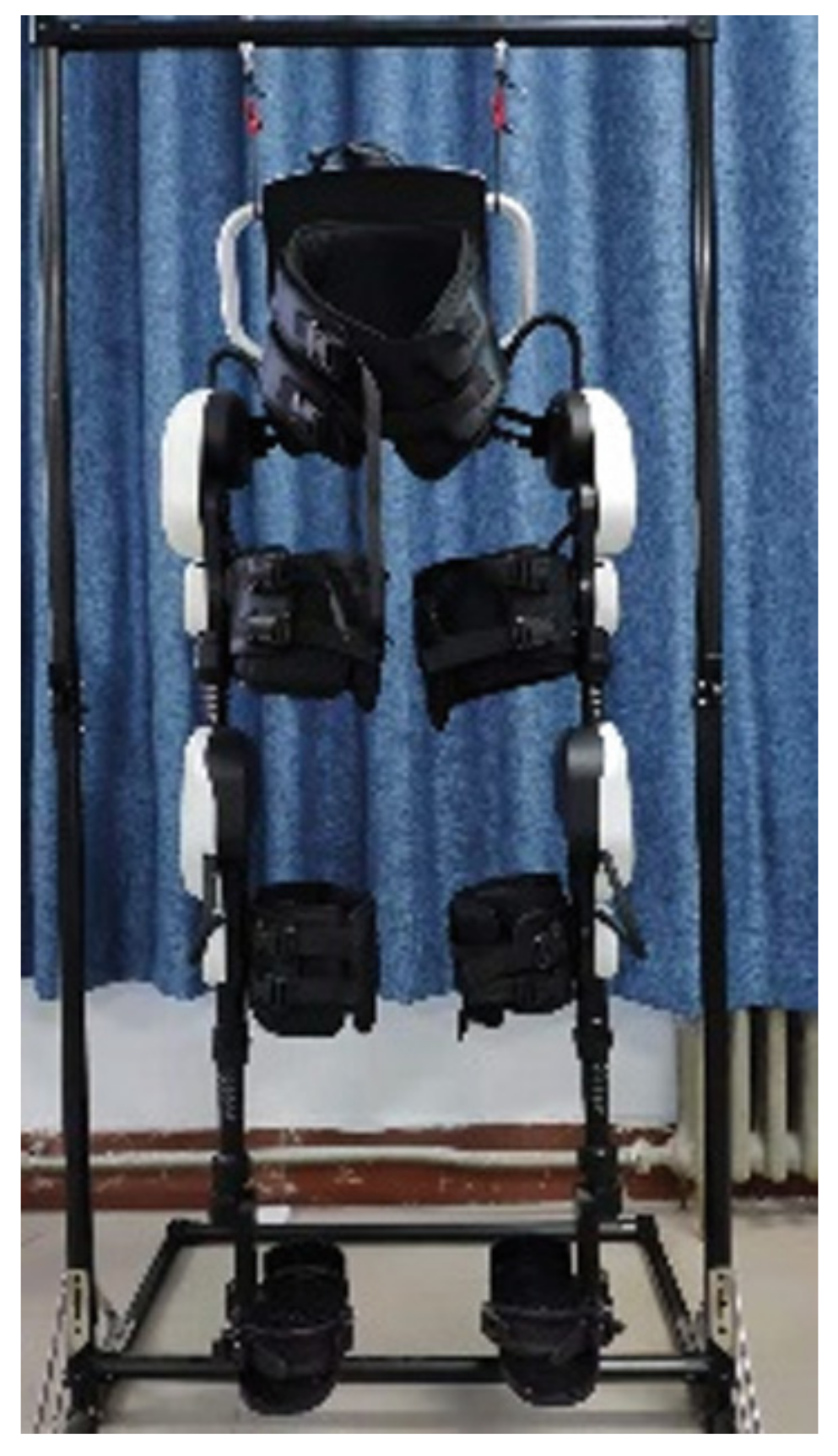

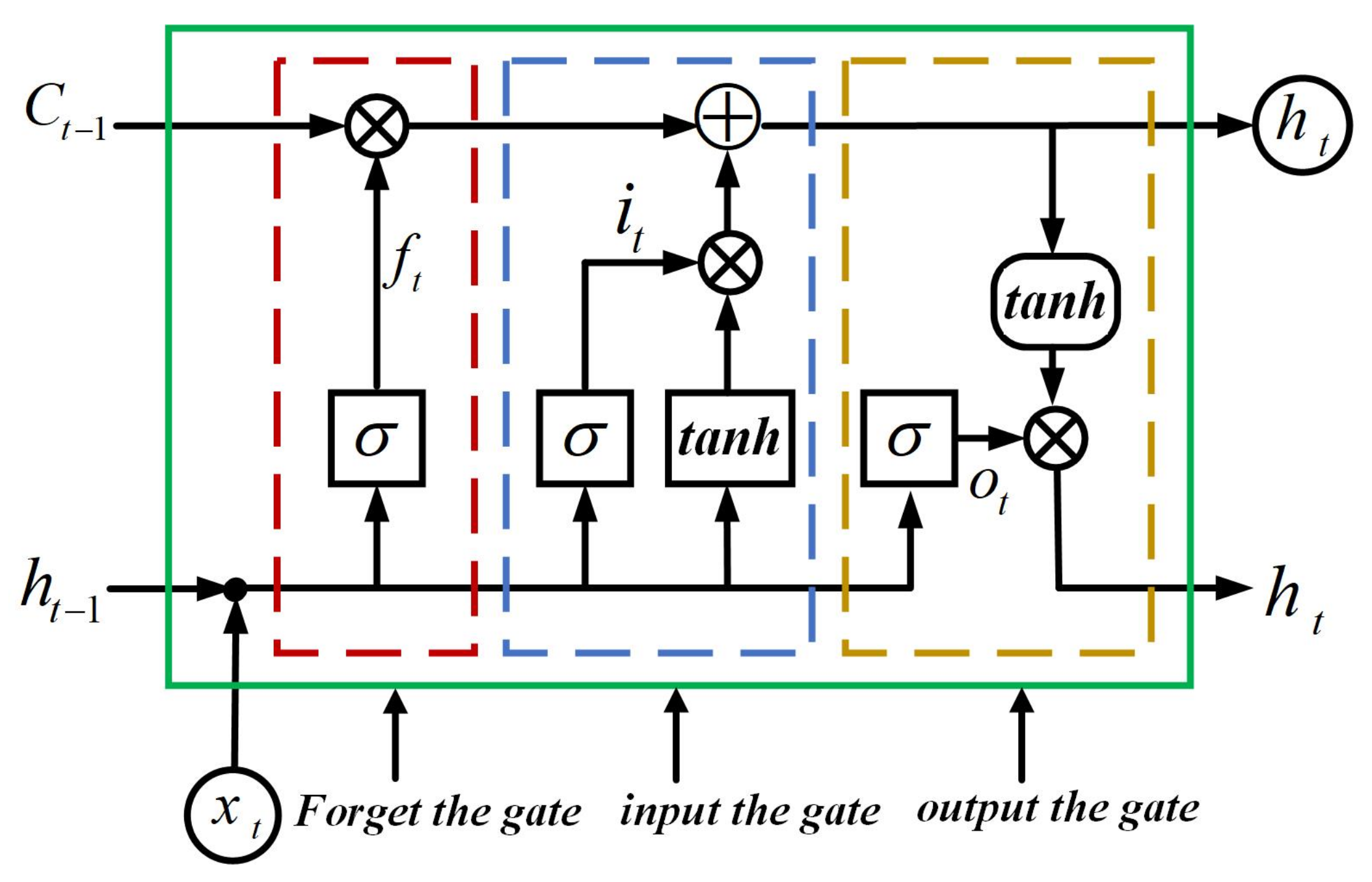
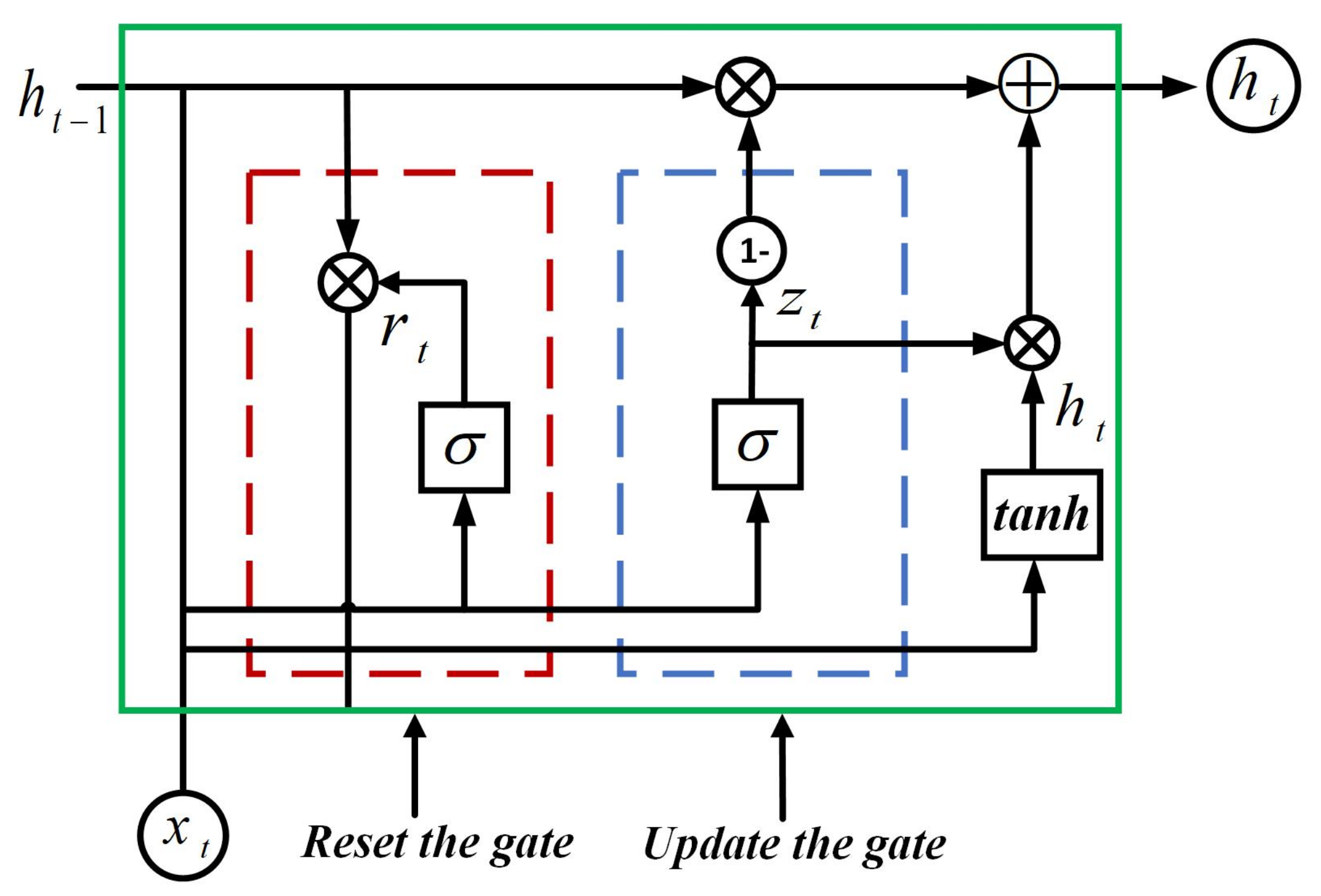
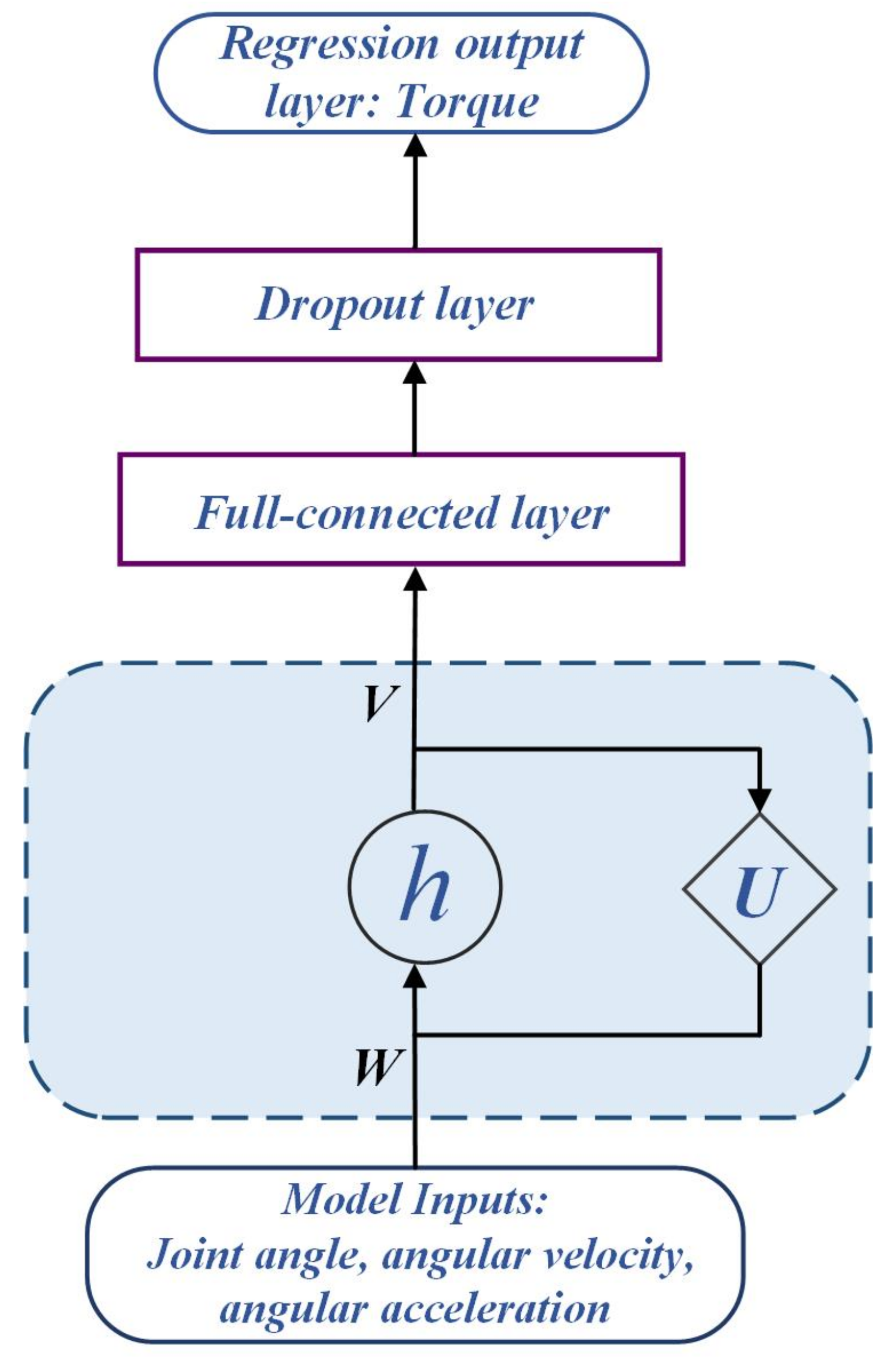
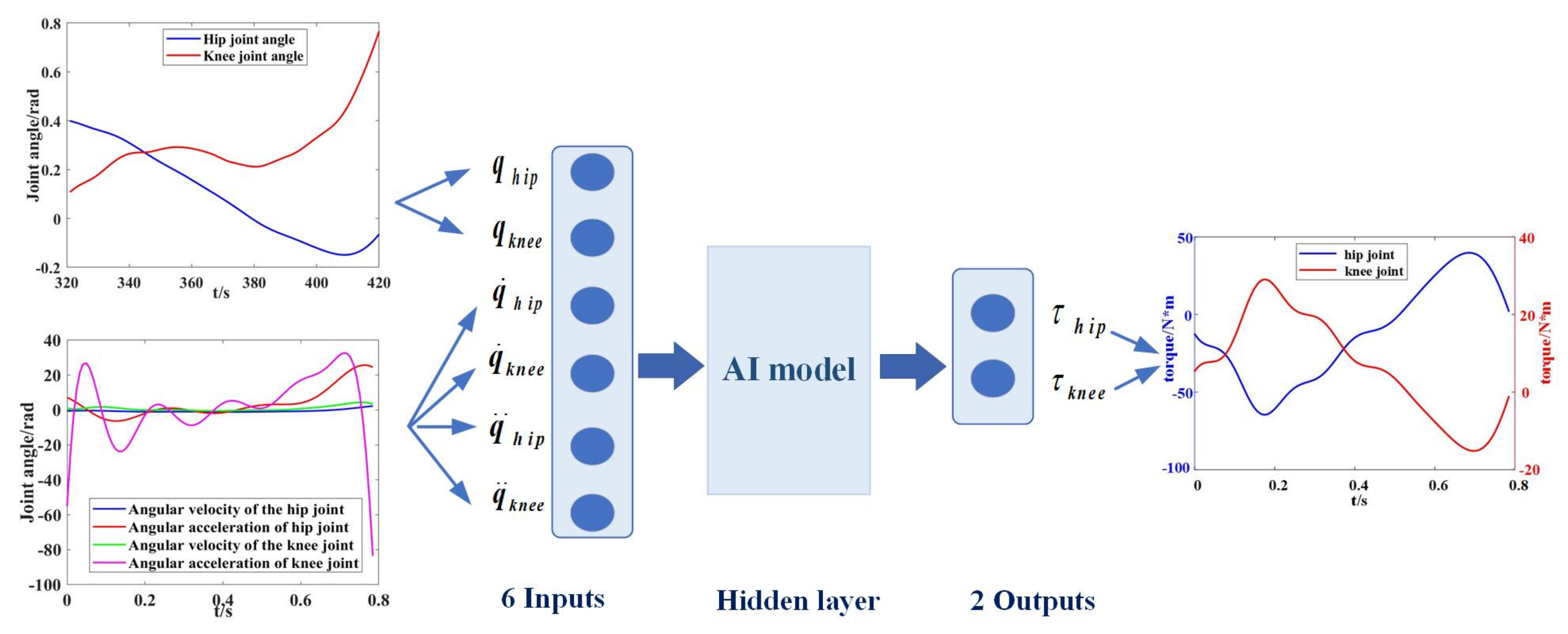
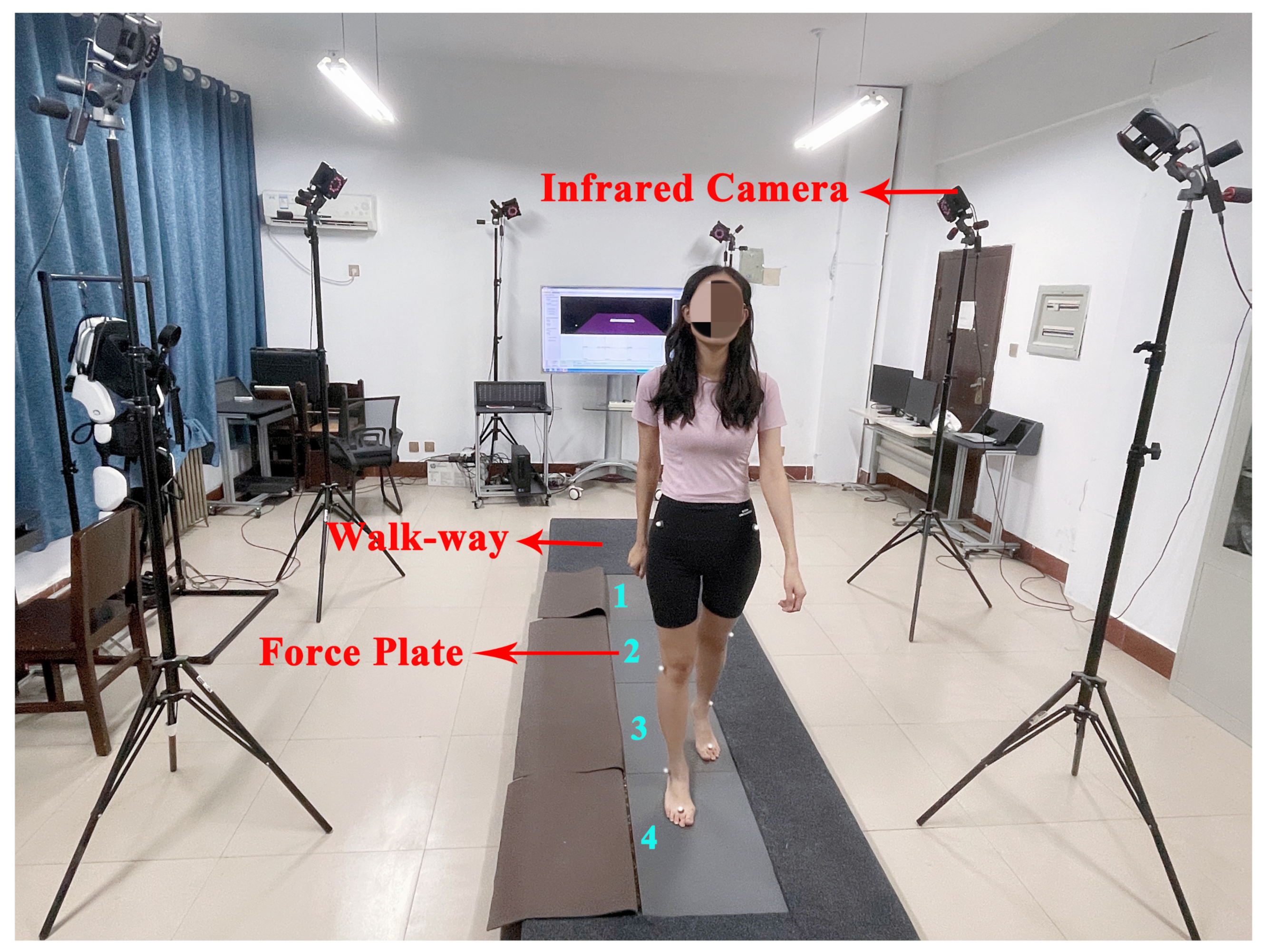
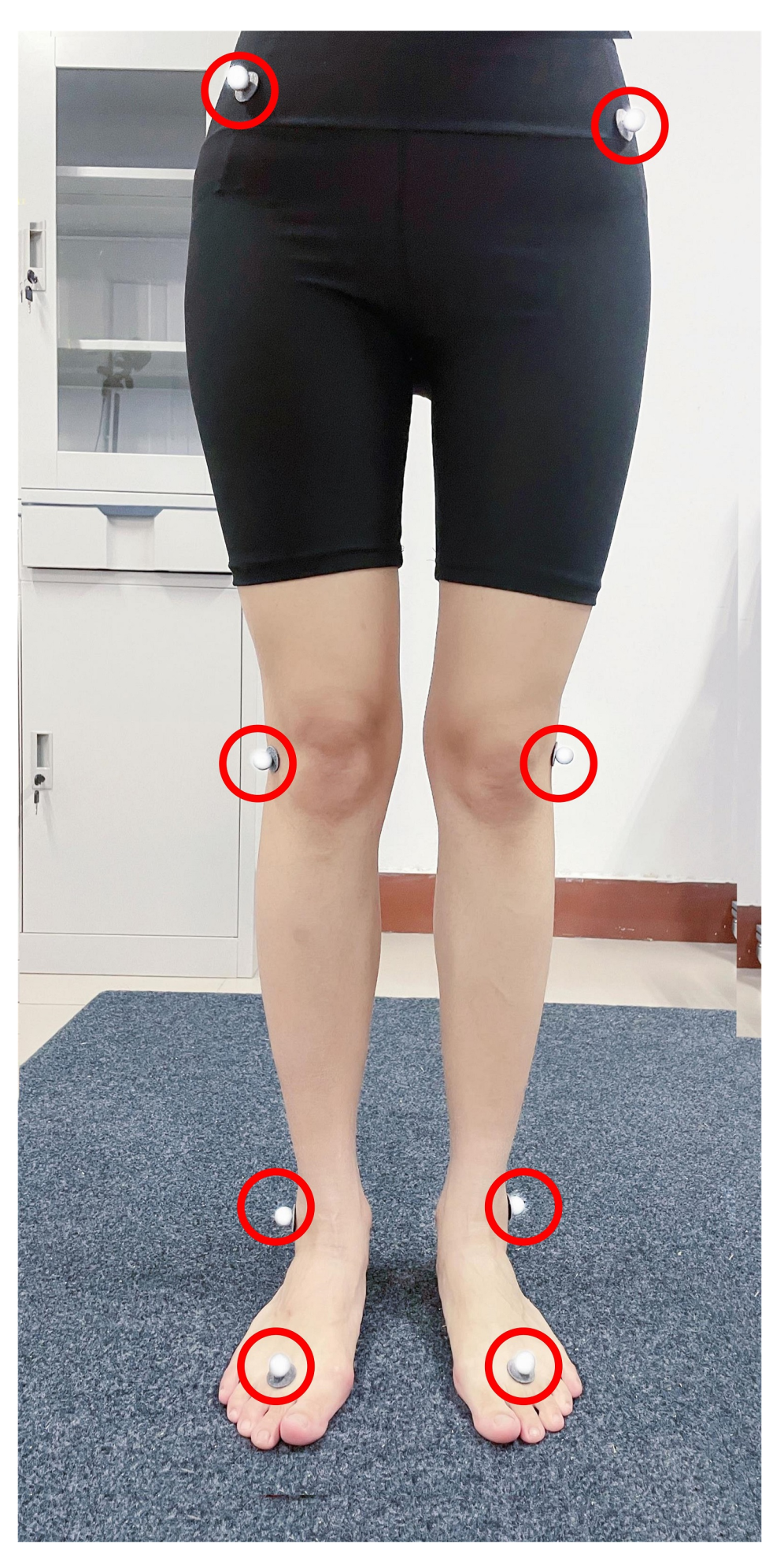

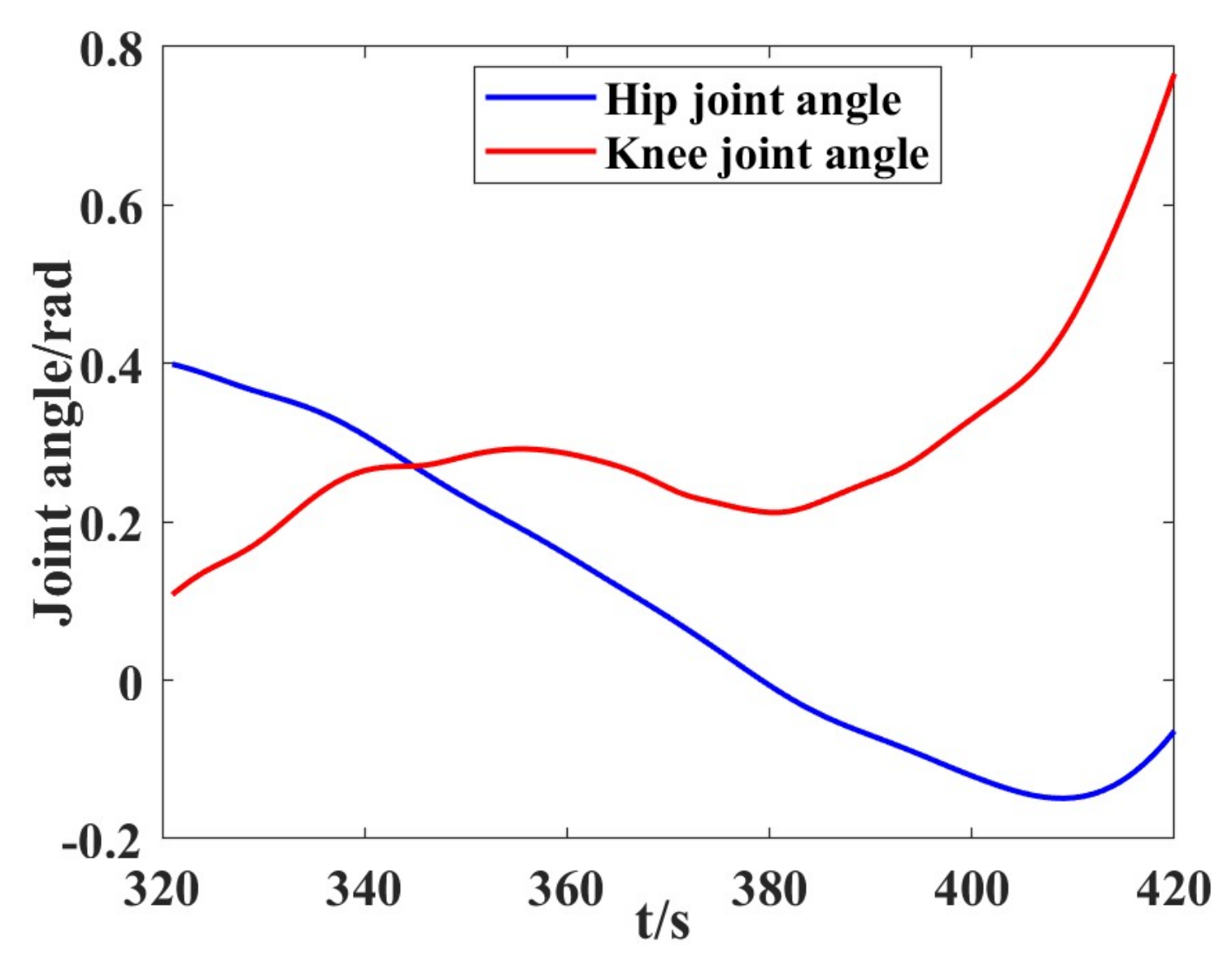
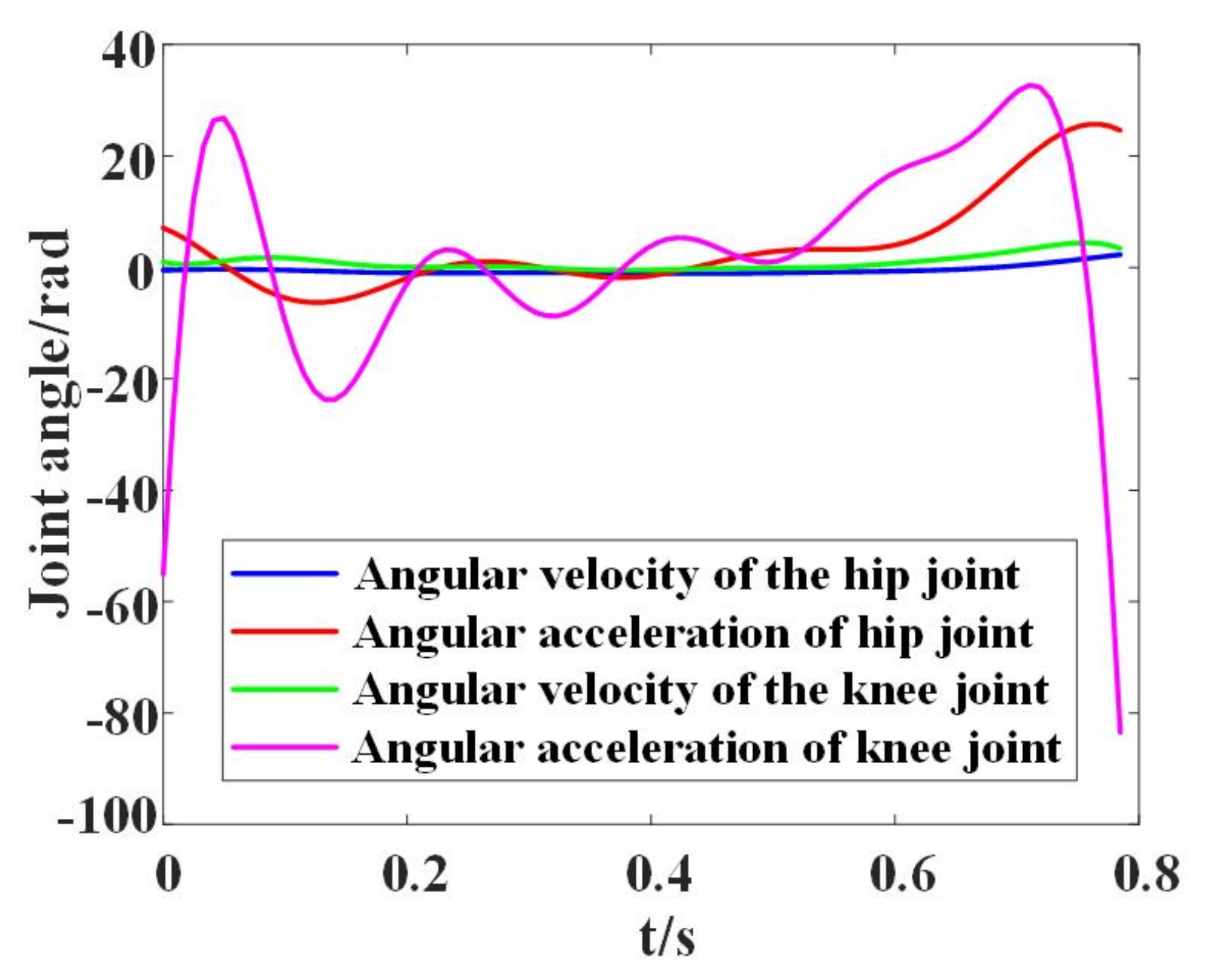
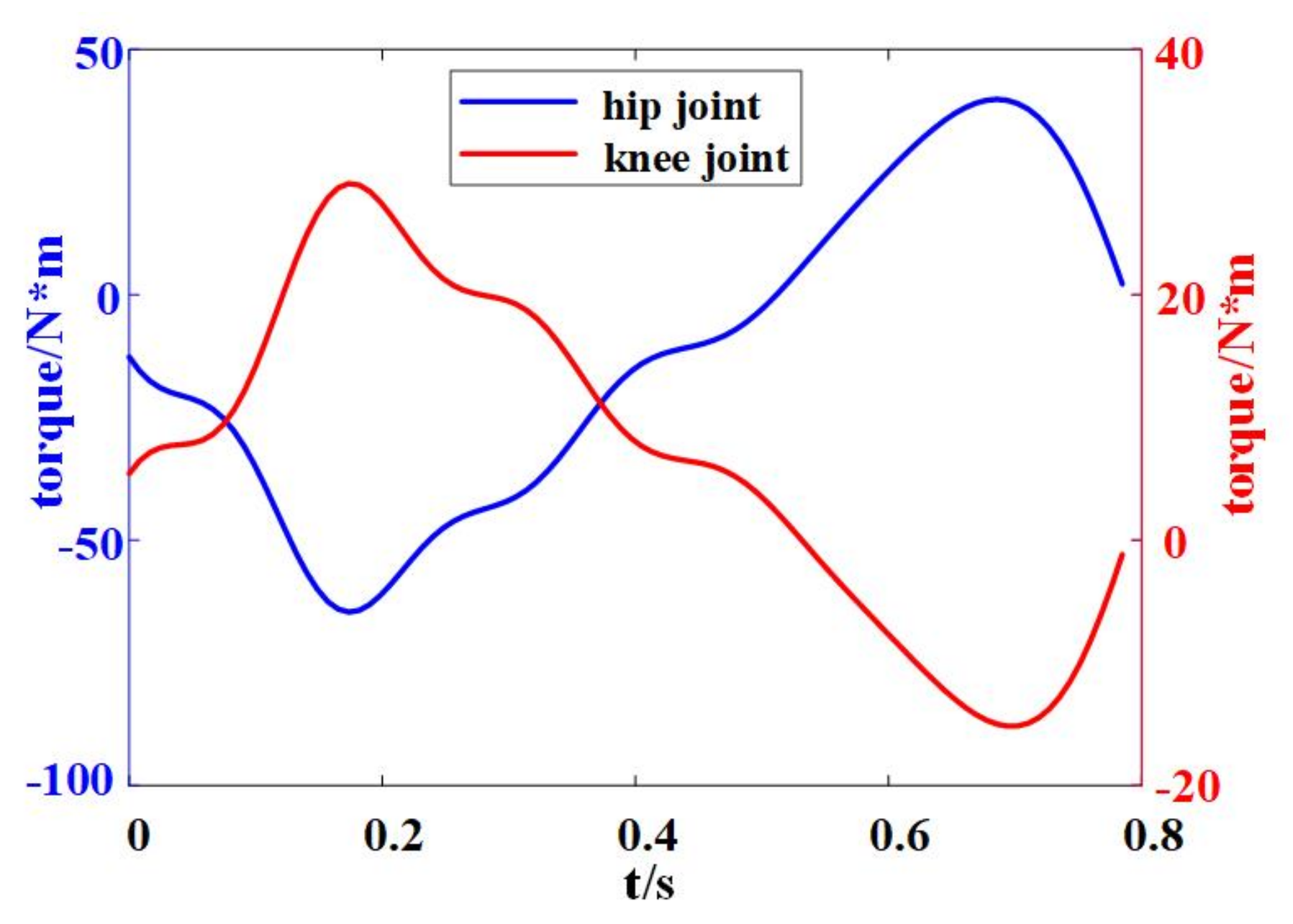
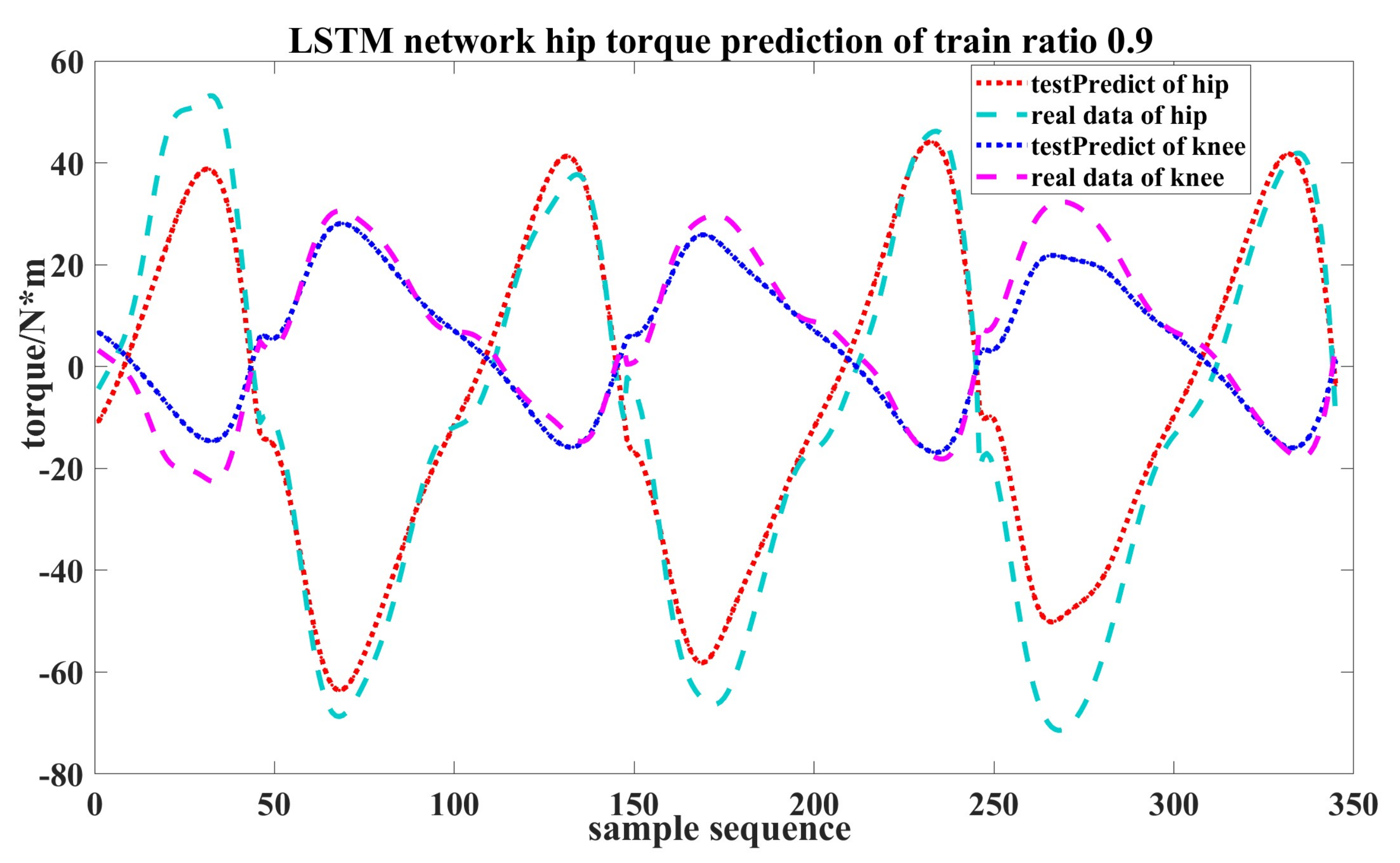
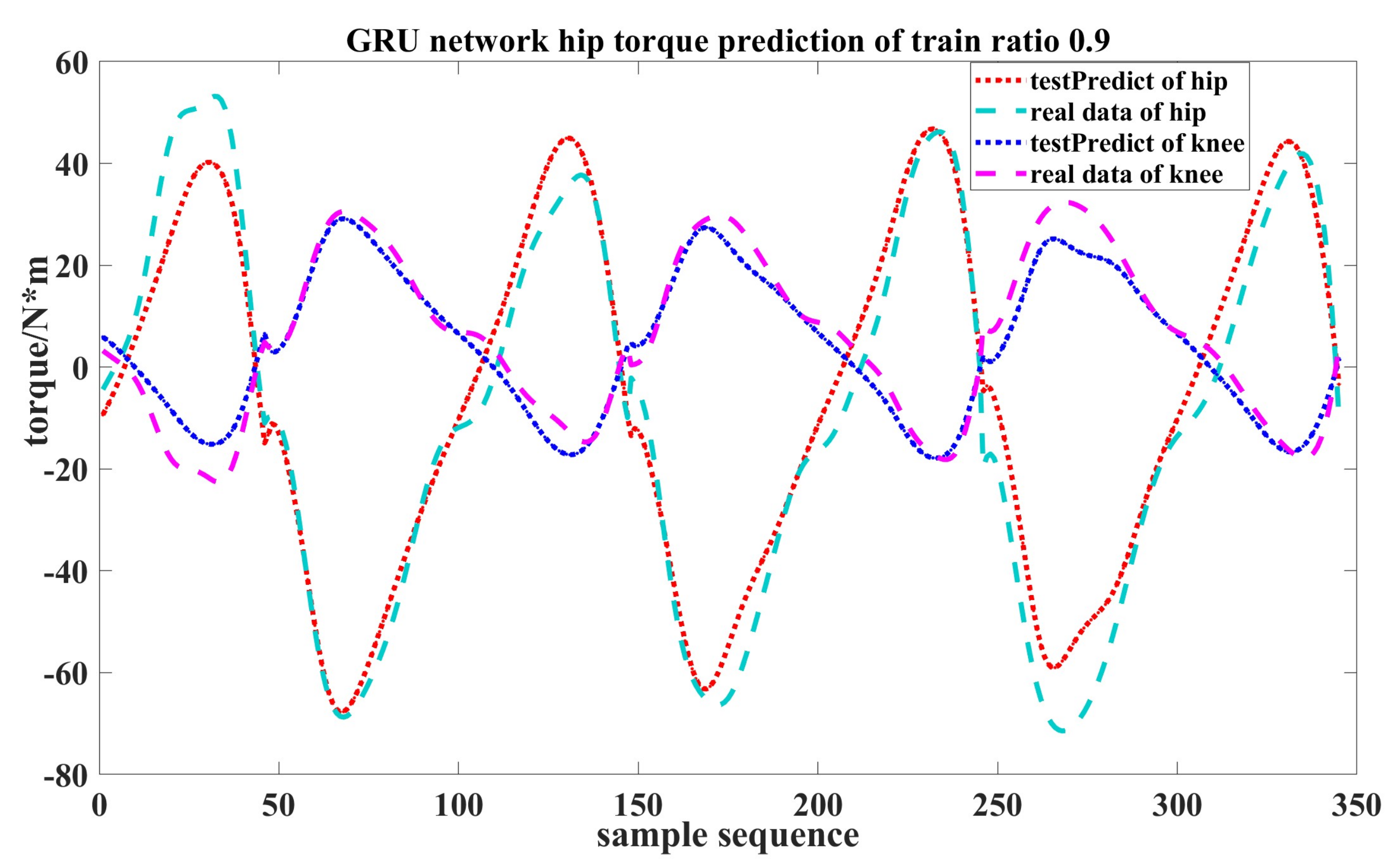
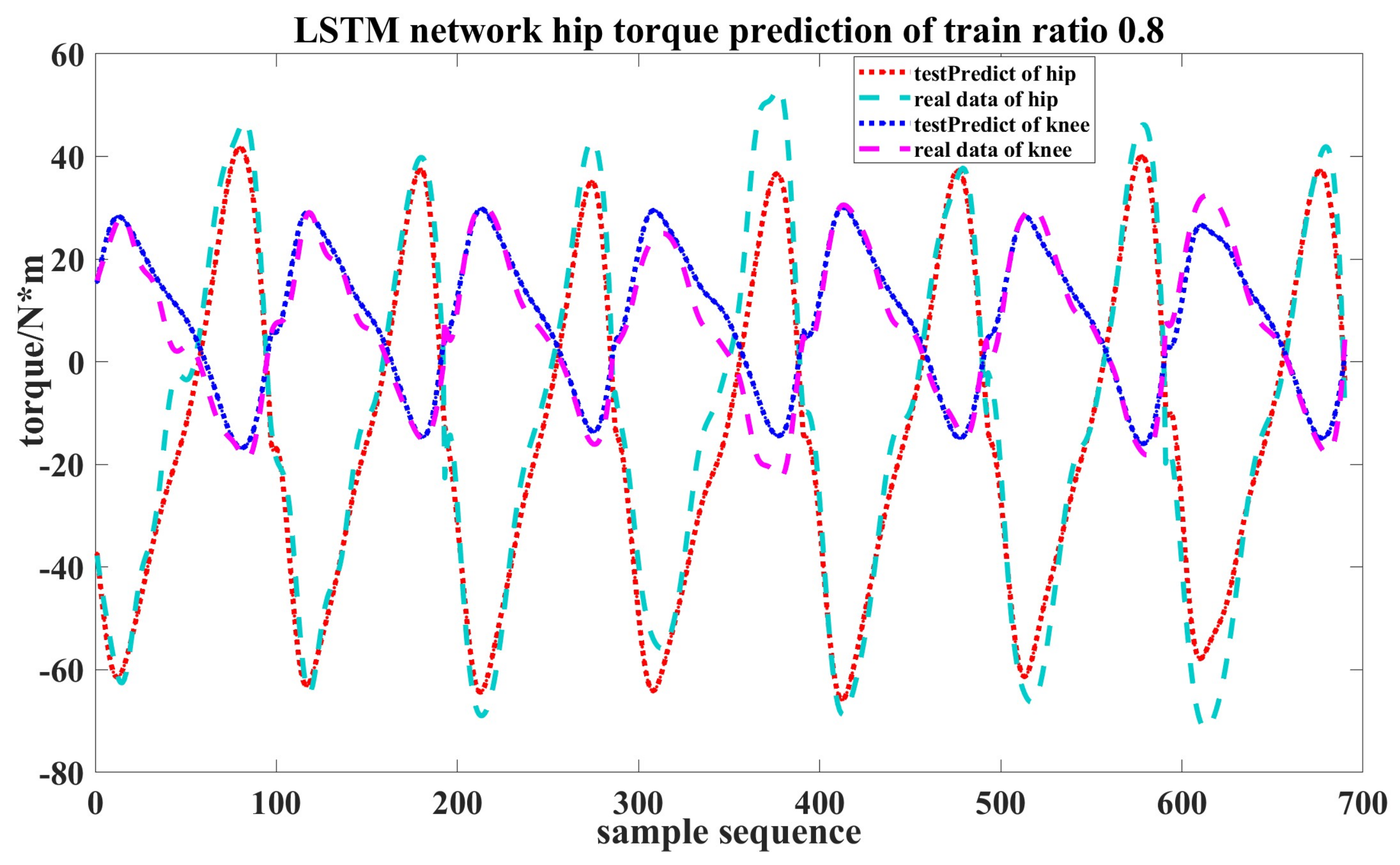
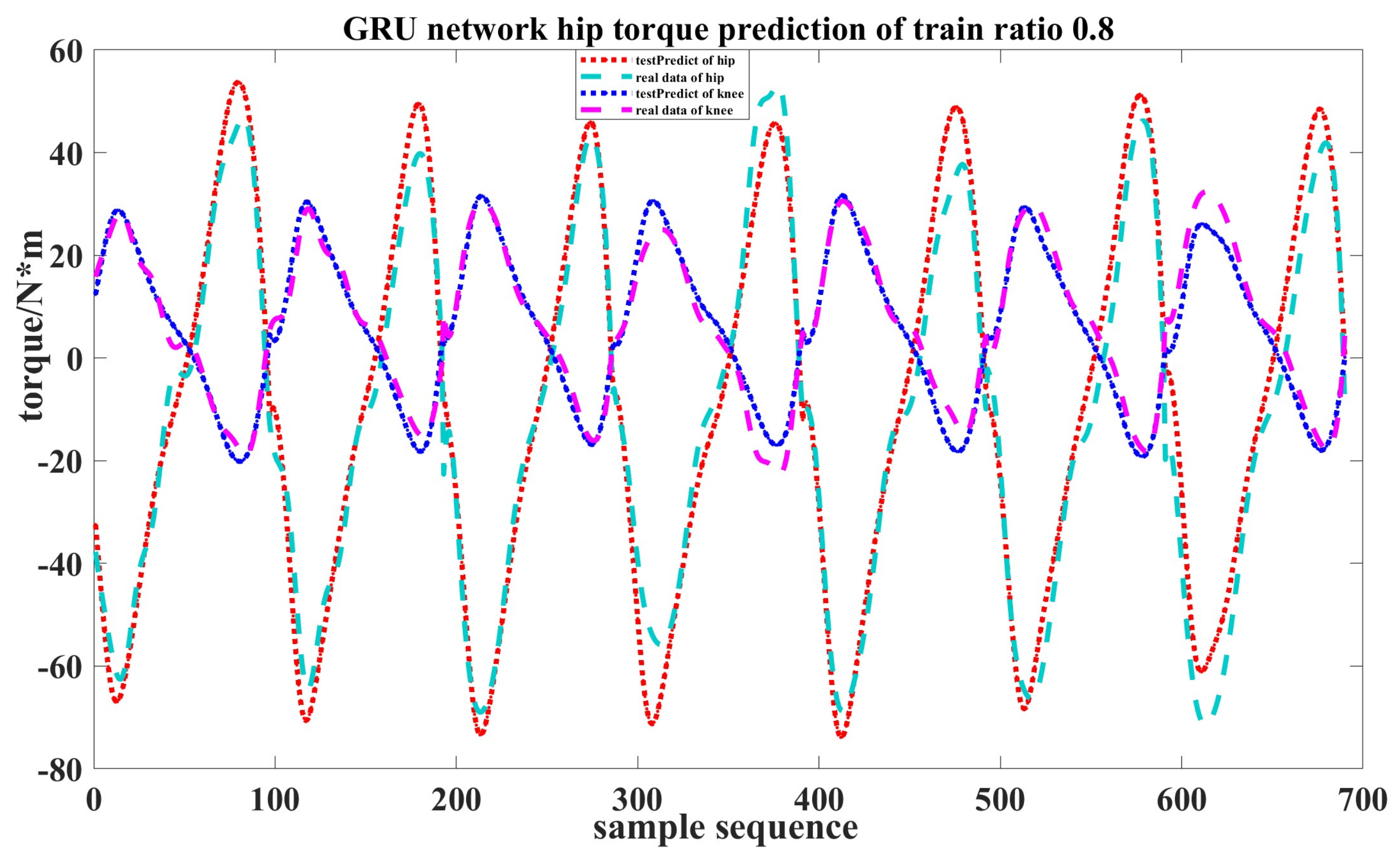
| Input Value | Data Bulk | Target Value | Data Bulk |
|---|---|---|---|
| Hip joint angle | 3451 | Moment of hip joint | 3451 |
| Hip joint angular velocity | 3451 | ||
| Angular acceleration of hip joint | 3451 | ||
| Knee joint angle | 3451 | Moment of knee joint | 3451 |
| Knee joint angular velocity | 3451 | ||
| Angular acceleration of Knee joint | 3451 |
| Train Ratio | Method | Epoch | Time (s) | RMSE | |
|---|---|---|---|---|---|
| 27,608 samples | 0.9 | LSTM | 100 | 3.12 s | 0.19334 |
| GRU | 100 | 1.54 s | 0.16905 | ||
| 0.8 | LSTM | 100 | 4.23 s | 0.17525 | |
| GRU | 100 | 1.59 s | 0.1571 |
Publisher’s Note: MDPI stays neutral with regard to jurisdictional claims in published maps and institutional affiliations. |
© 2022 by the authors. Licensee MDPI, Basel, Switzerland. This article is an open access article distributed under the terms and conditions of the Creative Commons Attribution (CC BY) license (https://creativecommons.org/licenses/by/4.0/).
Share and Cite
Song, L.; Wang, A.; Zhong, J. Inverse Dynamics Modeling and Analysis of Healthy Human Data for Lower Limb Rehabilitation Robots. Electronics 2022, 11, 3848. https://doi.org/10.3390/electronics11233848
Song L, Wang A, Zhong J. Inverse Dynamics Modeling and Analysis of Healthy Human Data for Lower Limb Rehabilitation Robots. Electronics. 2022; 11(23):3848. https://doi.org/10.3390/electronics11233848
Chicago/Turabian StyleSong, Lulu, Aihui Wang, and Junpei Zhong. 2022. "Inverse Dynamics Modeling and Analysis of Healthy Human Data for Lower Limb Rehabilitation Robots" Electronics 11, no. 23: 3848. https://doi.org/10.3390/electronics11233848
APA StyleSong, L., Wang, A., & Zhong, J. (2022). Inverse Dynamics Modeling and Analysis of Healthy Human Data for Lower Limb Rehabilitation Robots. Electronics, 11(23), 3848. https://doi.org/10.3390/electronics11233848






